
As security is ramped up in Washington, D.C., and state capitols across the U.S., the FBI is warning of more potential violence in the lead-up to Joe Biden’s inauguration on January 20. Federal authorities have arrested over 100 people who took part in last week’s deadly insurrection at the Capitol, and The Washington Post reports that dozens of people on a terrorist watch list — including many white supremacists — were in Washington on the day of the insurrection. “This was something that had been coming for a long time,” ProPublica reporter A.C. Thompson, who covers right-wing extremism, says of the January 6 riot. “If you looked at the rhetoric online … it was all about revolution, it was all about death to tyrants, it was all about civil war.”
Transcript
AMY GOODMAN: This is Democracy Now!, democracynow.org, The Quarantine Report. I’m Amy Goodman.
Security is being ramped up in Washington, D.C., and state capitols across the United States as the FBI is warning of more “potential armed protests” in the lead-up to Joe Biden and Kamala Harris’s inauguration, following last week’s deadly insurrection at the Capitol. By Wednesday, 21,000 National Guard troops are expected to be in Washington, D.C. FBI Director Christopher Wray spoke publicly for the first time, more than a week after the insurrection, Thursday.
CHRISTOPHER WRAY: We’re concerned about the potential for violence at multiple protests and rallies planned here in D.C. and at state capitol buildings around the country in the days to come, that could bring armed individuals within close proximity to government buildings and officials.
AMY GOODMAN: Federal authorities have arrested over a hundred people who took part in last week’s deadly insurrection at the Capitol that left five — actually, six [sic] people — dead. Police and federal agents continued to round up rioters Thursday. That’s five people dead. Among the latest arrests, Kevin Seefried, who was photographed carrying a Confederate battle flag through the Capitol; former U.S. Olympic medalist Klete Keller, who wore his Olympic swim team jacket to the riots; Robert Sanford, a retired firefighter who was filmed throwing a fire extinguisher at Capitol Police officers, striking three of them in the head; and Peter Stager, an Arkansas man filmed beating a police officer at the Capitol with an American flag.
In Arizona, prosecutors say they’ve uncovered evidence that the intent of some of the rioters was to, quote, “capture and assassinate elected officials in the United States government.” Prosecutors revealed the QAnon conspiracy theorist Jacob Chansley, who is also known as Jake Angeli, left a note for Mike Pence in the Senate, warning, quote, “It’s only a matter of time, justice is coming.” Chansley faces charges of violent entry and disorderly conduct, after he was filmed posing shirtless, wearing buffalo horns and holding a spear on the Senate dais.
And in Texas, a federal prosecutor has revealed more details about its case against retired Air Force officer Larry Brock, who was seen inside the Capitol dressed in military gear, holding zip ties. Prosecutors claim that Brock was prepared to take hostages and, quote, “perhaps execute members of the U.S. government.”
Meanwhile, The Washington Post reports dozens of people on a terrorist watch list — mostly white supremacists — were in Washington on the day of the insurrection.
We go now to A.C. Thompson, staff reporter with ProPublica, who has covered the rise of the right-wing extremist and white supremacist groups for years, his latest piece headlined “Members of Several Well-Known Hate Groups Identified at Capitol Riot.” He’s joining us from Lansing, Michigan.
A.C., thanks so much for coming back to Democracy Now! Can you start off by responding to what happened last week in Washington, D.C.? Did it surprise you, this mass insurrection, after President Trump had for weeks been calling for this protest and addressed them before they marched to the Capitol? And who was behind it?
A.C. THOMPSON: One of our contacts in the far-right movement said to us, “Hey, I think this is going to go in a very extreme direction. And, in fact, I’m not going to mobilize my people to participate, because I think it’s going to be very violent.” And that was a signal to us that this was going to be quite extreme.
We had seen this building over the past year, though. If you go back to January 2020, in Richmond, Virginia, 20,000 armed people showed up at the state House there. In the spring, there were protests that were armed in Michigan at the state House, including one in which people stormed the building and intimidated legislators with weapons, with AR-15 assault rifles. We saw the Idaho state House get stormed. We saw the Oregon state House get stormed. We saw, in Olympia, Washington, by the Capitol there, there were shootings in the street two weeks in a row. Two people were shot, one each week. And so, this had been building for a long time.
I personally was at an armed rally at the Virginia state House a couple months ago, where about 50 men with weapons showed up and basically dared the police to arrest them, because they were in violation of the law. So, this was something that had been coming for a long time. And if you looked at the rhetoric online and you looked at what had been said by members of these groups for a long time, it was all about revolution, it was all about death to tyrants, it was all about civil war, for a long time.
On the day of the event, we saw militia groups like the Three Percenters, the Oath Keepers, who were playing a big role. We saw the conspiracy theorists, like the QAnon people, who were there. We saw, I think, a significant role played by the Proud Boys, who you could call an ultranationalist street-fighting gang or group. And I think we saw a lot of military vets and some current military there. And there were also people who belong to straight-up white supremacist or white nationalist groups.
AMY GOODMAN: You mentioned Virginia. We reported earlier this week that two of the rioters were off-duty Virginia police. And this goes to the issue of police and military from all over the country. You know, people were saying, “Where were the police?” Well, they were part of the riot, the insurrection, a number of them. You have police from Seattle, apparently New York, Philadelphia transit officers, a number of them, two Virginia officers. Now, this is just people who were identified. Can you talk about the — a PSYOPS guy, a military psychological operations. Can you talk about the significance of this?
A.C. THOMPSON: You know, I think there is a big concern that what we’ve seen in recent years is a lot of members of police departments, or at least some members of police departments, being radicalized in this right-wing direction. And in part, I think, what that’s been a product of is they’ve seen the rise of the racial justice movements and police accountability movements, and they say, “I feel under attack. The person who’s sticking up for us is Donald Trump, who’s super law and order, and so I’m going to get deep into the Donald Trump world.” And I think that’s part of what’s happened.
What’s happening now, though, is different. And what’s happening now is, when I was in D.C. at “Stop the Steal” protests and other protests in recent months, you would see the right-wing protesters did not want to fight with the police. They would say, “We’re the law-and-order people. We’re the pro-police people. We’re not going to fight with the police. We want to fight with the police, but we’re going to back off.” That has changed. That has pivoted. And now what you’re seeing in the chatter amongst the right-wing groups is, “We are at war with the police. The police are in bed with the reds. The police are a tool of this socialist takeover, which we believe magically is happening, without any facts. We believe that the police are subverting democracy. And we are now going after the police.” And that’s what you saw at the Capitol.
AMY GOODMAN: So, let’s talk about the lack of preparation at the Capitol. You see these police officers, the Capitol Police, some help by the Metropolitan Police, fending for themselves. And we got the reports this week of the level of threat assessment reports that would come before each Black Lives Matter protest. Nothing like that was issued now, and yet you have this coming together of all of these people from — and if you can explain what the terrorist watch list is? It’s not a no-fly list. And for many progressives, they may be very concerned about who makes up this list, but the fact is, scores of people on the FBI’s own list had gathered, and yet the FBI issued no reports, and there was so little preparation. We saw African American Capitol police essentially running for their lives, saying they didn’t have the support from the top, and they were being chased by the mob.
A.C. THOMPSON: Right. So, there’s a few things that I want to touch on here. And a few years ago, you and I were talking about Charlottesville. And what we had seen there was an intelligence breakdown, where, really, the intelligence analysts and the law enforcement personnel, who should have really been monitoring the online channels and the chatter, missed what was going on and what was going to develop. And then you saw multiple law enforcement agencies who were supposed to be there coordinating, working together, who really didn’t have a plan, and cooperation totally broke down. And when violence and rioting broke out, the people with the tactical gear, with the shields, with the helmets, with the riot gear, were nowhere near the violence.
You saw a lot of that happen at the Capitol, a lot of the same things happening over again, years later, with basically some of the same people showing up at both events. This is what’s baffling to me. The FBI has gotten very good in recent years at tracking and arresting and building cases against right-wing extremists, white supremacist extremists, anti-government extremists. In the run-up to the election, they built a lot of very complicated, important cases against people who were bent on violence against public officials, the kidnapping plot against Gretchen Whitmer, the governor in Michigan. They were very, very busy. And what I don’t understand is how that knowledge from the field agents out in the field doesn’t seem to have translated, as far as we can tell at this point, into intelligence products that would have gone out and been disseminated more broadly to other law enforcement agencies. That’s a thing.
Another thing is just simply the lack of personnel and the lack of preparation by the Capitol Police on the day of the event. I’ve been watching the D.C. Metropolitan Police for months now, and I think that they’ve been very professional, very sophisticated, in allowing protesters at these right-wing events in D.C. to express themselves, but not to harm people and not for violence to break out. That is clearly not the case with the Capitol Police. They did not evince that level of professionalism and sophistication.
AMY GOODMAN: The Washington Post reported earlier this week the FBI explicitly warned of violence and “war” at the U.S. Capitol in an internal report issued one day before last Wednesday’s deadly invasion. The report cited online posts, including one which said, quote, “Congress needs to hear glass breaking, doors being kicked in, and blood from their BLM and Pantifa slave soldiers being spilled. Get violent. Stop calling this a march, or rally, or a protest. Go there ready for war. We get our President or we die.”
So, A.C. Thompson, I mean, how much more explicit can you get? And, I mean, we’re not only talking about let’s do a postmortem on last week’s event — and “postmortem” is the right word. I mean, you’re talking about a number of people dead: two police officers — the Capitol Hill police officer, Sicknick, who died, and then one who took his own life — and then you have three people who died in medical emergencies, apparently. But we’re not only talking about the past; we’re talking about whether this is prologue to this weekend. I mean, Monday is Dr. Martin Luther King’s federal birthday, which is official — his birthday was today. But for years, white supremacists marched on state capitols to prevent it from being recognized as a national holiday. And then, of course, Wednesday, the inauguration.
A.C. THOMPSON: Yeah, I think I don’t want to be alarmist, and I don’t want to be the person who says the sky is falling, but I do think we have to be vigilant. I think we have to be looking forward. I think we have to be very, very careful in the months ahead. And this is why.
We were out on the campaign trail filming for Frontline at Trump rallies and at Trump speeches. And when we’d meet people, they would all say, “The only way the president is going to lose the election is if there’s massive fraud, and it’ll be probably massive fraud orchestrated by those nefarious globalists.” There are millions of people who believe, because of Trump’s incessant false messaging, that the election was fraudulent, that the election was stolen from him. And if you have just a very small percentage of those millions of people who are inclined to take violent action because they believe that we are on the cusp of a massively undemocratic transition of power, built around fraud, of course some of those people are likely to take very violent action to save, in their mind — you know, in their minds, to save this republic.
And that is the thing we must be concerned about. In America, it does not take very much money and very much skill to create a mass casualty event with a bomb or a gun. And that is something we’re going to have to be very vigilant about, while at the same time ensuring that people have a right to protest, that people have a right to express themselves.
AMY GOODMAN: I’m wondering if you can talk about the alliances between all of these groups and current sitting members of Congress. You’ve got Utah Republican Congressmember John Curtis, who showed reporters a death threat left on his door on Thursday, a poster with skulls and crossbones pasted over his eyes, and the caption, “Wanted for treason! For resisting the true electoral victor Trump.” Now, here is a congressman who, of course, was voicing concern about the fact that Republicans were not accepting the election of Joe Biden, but you’ve got other ones who led the charge about doing this. Can you talk about whether — the congressmembers and what should happen to them now? Even in President Trump’s latest video, he will not acknowledge this election of Joe Biden. And does it actually encourage the violence, the fact that he’s not showing up for the inauguration? Many may be deeply relieved that Trump won’t be there, but does that send a message it’s OK to target?
A.C. THOMPSON: I think there’s a couple things going on here. And the first thing is that we have not acknowledged the scale of threats, intimidation and violence against public leaders that’s occurred over the past year. We have so many public health officials in this country, at county and state levels, who have been threatened — at federal levels, as well — been threatened, who have been terrorized, who have had to get extra security, who have been doing their jobs and are in fear for their lives. And we, basically, as a society, have not grappled with that.
Now we’ve got elections officials, Republican and Democrat, who are dealing with that. We’ve got members of Congress who are dealing with that. We’ve got law enforcement leaders who are dealing with that. You know, in California, we had two law enforcement officials who were shot by an extremist group, allegedly, during the spring. Somebody is now facing federal charges for that. So I think there’s been a —
AMY GOODMAN: Boogaloo bois.
A.C. THOMPSON: Yeah, the boogaloo bois, exactly. So I think there’s been a level of violence and aggression towards public officials and government leaders that we have not seen in decades. And I don’t think we’ve reckoned with that at all. It’s a scary time to be a public leader.
Now, when you’re talking about Congress, this is a thing that we’re going to have to understand deeply, and we’re going to need serious, serious investigations about what was the role of sympathetic members of Congress in possibly fomenting or even enabling this insurrection, because I don’t think we’ve gotten to the bottom of that. We’ve heard names thrown out as potential members of Congress, from Arizona and Alabama, who may have aided and abetted these groups, but we don’t know yet. I think that’s a very concerning thing, as well. We also —
AMY GOODMAN: I mean, you have Mikie Sherrill — right? — the New Jersey congressmember, who said she — they called the sergeant-of-arms the day before, saying, “What are all these tour groups?” they now recognize were the people who were part of this insurrection being taken around. I mean, COVID times, they’re not doing tours there, so they could only get in through a congressmember or their staff.
A.C. THOMPSON: Exactly. And that is a big concern. I’ll tell you, from interviewing members of Congress, Republicans and Democrats, they said to us — you know, we had a Democratic congressman say to us, “I’m worried that we have empathizers and sympathizers within the ranks of the Capitol Police.” That was Rep. Andre Carson from the Indianapolis area. We had a GOP congresswoman, Nancy Mace, who said, “Look, I could tell, days before this happened, that it was going to be ugly, because I was getting relentless threats online and through all different channels. And I’m a Trump supporter, but I had said I’m not going to try to overturn this election. And so then I was the one targeted.” And it doesn’t sound like she got a lot of help with that. She sent her children home to South Carolina because she was scared for their lives. We have not even begun to grapple with how serious this problem is.
AMY GOODMAN: If you could very quickly — we only have a minute to go, but you detail in your pieces, and you just talked about, the Three Percenters, the Oath Keepers, boogaloo bois, Proud Boys. Tell us who some of these people are. Many people haven’t even heard of these groups before.
A.C. THOMPSON: Right. So, the boogaloo bois are an anti-government group who joined the Capitol insurrection, who have been tied to murders, kidnapping plots and the rest. The Proud Boys are an ultranationalist street gang or street-fighting group that have been at many of these events and seem to have been a key player here. The Oath Keepers and the Three Percenters are militia groups that sort of are traditional, longtime anti-government groups. And QAnon is the conspiracy theory followers who believe that there’s a vast cabal of globalists and satanists who are trying to take over America.
AMY GOODMAN: And finally, you have Ali Alexander, and this from The Washington Post, who organized the so-called Stop the Steal movement, who said he hatched the plan for this insurrection with the support of the three Republican lawmakers — you alluded to them, but — Congressmembers Andy Biggs of Arizona, Mo Brooks of Alabama, Paul Gosar of Arizona, all hard-line Trump supporters.
A.C. THOMPSON: Yeah. And that’s the thing. That’s going to be a really key investigative point there. And honestly, like, looking at Mr. Alexander and how he raised money and what his role in all this was, as well, is going to be a key thing to look at.
AMY GOODMAN: A.C. Thompson, we want to thank you so much for being with us. Keep up your great investigation. Staff reporter with ProPublica who’s covered the rise of right-wing extremist and white supremacist groups for years. We’ll link to your latest piece, “Members of Several Well-Known Hate Groups Identified at Capitol Riot.”
Next up, as the U.S. death toll for COVID-19 approaches 400,000, we’ll speak with Dr. Peter Salk. His father, Dr. Jonas Salk, he first developed the first polio vaccine. Stay with us.


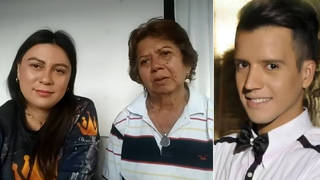
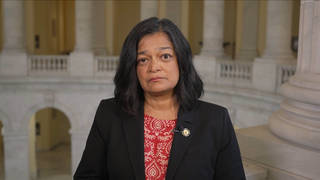
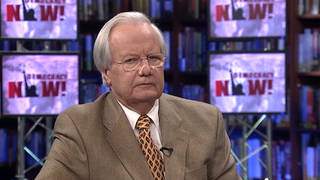
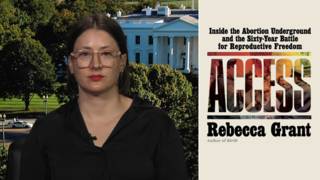
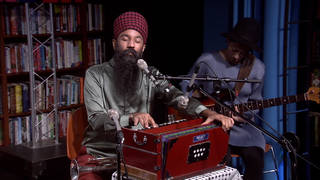
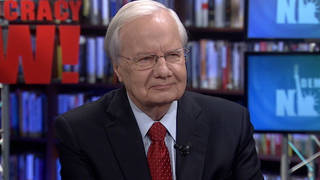
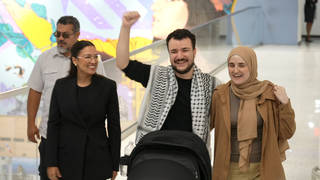

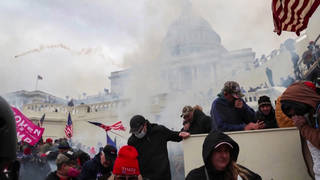

Media Options